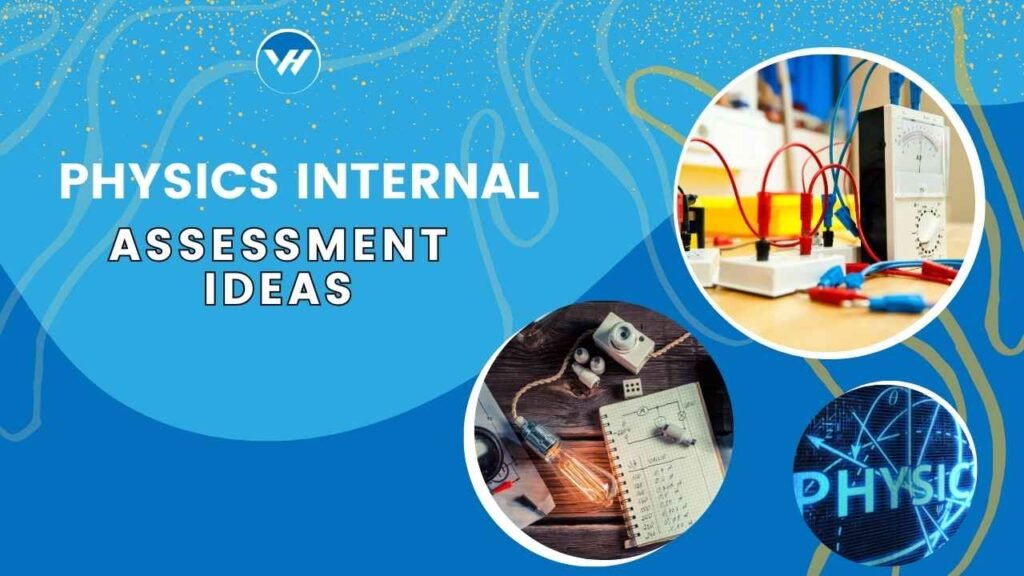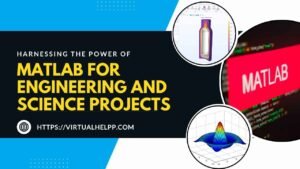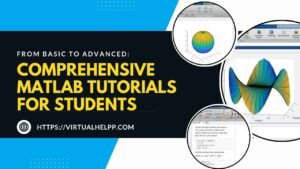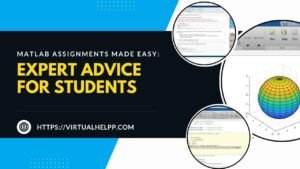Hey there, future physicists! If you’re gearing up for your Physics Internal Assessment (IA), you’re in the right place. The IA is a significant part of your physics coursework, and it can feel a bit overwhelming. But don’t worry—we’ve got your back. This guide will walk you through everything you need to know to ace your Physics IA, from picking the perfect topic to presenting your findings like a pro. Plus, we’ll show you how Virtual Help can be your secret weapon in this academic adventure.

Table of Contents
ToggleChoosing a Relevant and Interesting Topic
Understanding the Criteria for Topic Selection
The first step in your IA journey is selecting a topic that’s both interesting and meets the assessment criteria. A good topic should be specific, feasible, and have clear connections to the physics concepts you’ve studied. It’s essential to choose something that piques your interest because you’ll be spending a lot of time on it.
Examples of Engaging Physics Topics
Here are some cool topic ideas to get those creative juices flowing:
- The physics of roller coasters: Investigating energy transformations and forces.
- Studying the efficiency of different solar panel materials.
- Analyzing the aerodynamics of various car designs.
- Exploring the properties of superconductors.
- Investigating the impact of different variables on the speed of sound.
Remember, the best topic is one that excites you and is within your ability to research and experiment on.
Defining a Clear Research Question
Importance of a Well-Defined Research Question
Once you have your topic, the next step is to craft a clear and concise research question. This question will guide your entire project, so it’s crucial to get it right. A well-defined question helps keep your research focused and makes it easier to draw conclusions.
Tips for Crafting a Strong Research Question
- Be specific: Avoid broad questions that are hard to answer.
- Ensure it’s researchable: You should be able to collect data to answer the question.
- Make it relevant: It should tie back to key physics principles you’ve learned.
For instance, if you’re interested in solar panels, a good research question could be: “How does the angle of incidence affect the efficiency of a solar panel?”
Demonstrating a Strong Physics Background
Importance of Showing Comprehensive Understanding
Your IA isn’t just about doing an experiment; it’s also about demonstrating your understanding of the underlying physics. You need to show that you have a solid grasp of the concepts and theories relevant to your topic.
How Virtual Help Tutors Can Strengthen Your Knowledge
This is where Virtual Help can make a huge difference. Our tutors can help you deepen your understanding of complex physics principles and ensure you’re fully prepared to tackle your IA. Whether you’re struggling with thermodynamics or quantum mechanics, Virtual Help has got you covered.
Effective Experimental Design
Key Elements of a Successful Experiment
A successful experiment is well-planned and methodical. You need to decide on your variables, plan your procedures, and think about how you’ll collect and analyze data.
Examples of Experiment Ideas
- Measuring the acceleration due to gravity using a pendulum.
- Investigating the relationship between the frequency and wavelength of sound.
- Examining the thermal conductivity of different materials.
Make sure your experiment is feasible with the resources you have and can be completed within the given timeframe.
Data Collection and Analysis
Best Practices for Collecting Reliable Data
Collecting reliable data is crucial for your IA. Here are some tips:
- Use accurate instruments and calibrate them properly.
- Repeat measurements to ensure consistency.
- Record your data meticulously.
Tools and Techniques for Data Analysis
Once you’ve got your data, the next step is analysis. This might involve statistical methods, graphing, or using software tools like Excel or MATLAB. The key is to draw meaningful conclusions from your data that answer your research question.
Clear Communication of Ideas
Importance of Clarity and Coherence
Your IA should be easy to read and understand. Clear communication is essential to convey your ideas effectively.
Tips for Writing a Clear and Concise IA
- Structure your report logically: Introduction, Method, Results, Discussion, Conclusion.
- Use headings and subheadings to organize your content.
- Write in simple, straightforward language.
- Avoid jargon and explain technical terms.
Developing a Strong Argument
How to Build and Present Your Argument
Your argument is the backbone of your IA. It’s where you interpret your data and explain how it supports (or refutes) your hypothesis.
Linking Your Findings to the Research Question
Make sure every point you make ties back to your research question. This helps create a cohesive narrative and shows that your work is focused and relevant.
Utilizing Advanced Physics Concepts
Incorporating Complex Theories and Principles
To score top marks, your IA should demonstrate a deep understanding of physics. This means going beyond the basics and incorporating advanced concepts and theories.
Examples of Advanced Concepts to Include
- Quantum mechanics: If your topic involves light, you might discuss photon behavior.
- Thermodynamics: Useful for topics related to heat and energy transfer.
- Electromagnetism: Relevant for studies involving electrical circuits or magnetic fields.
Precision and Accuracy in Measurements
Techniques for Ensuring Accurate Results
Accuracy and precision are vital in any scientific experiment. Here are some tips:
- Use high-quality instruments.
- Follow procedures carefully.
- Take multiple measurements and calculate averages.
Importance of Consistency in Measurements
Consistency helps ensure that your results are reliable and can be replicated. This is a key component of scientific validity.
Effective Presentation of Data and Results
Visual Representation of Data
Graphs, charts, and tables are excellent ways to present your data clearly and effectively. They make it easier for readers to understand your findings at a glance.
Tips for Creating Graphs and Charts
- Label your axes and provide units.
- Use appropriate scales.
- Highlight key data points.
Connecting Experimental Results to Theory
Bridging the Gap Between Practice and Theory
A crucial part of your IA is linking your experimental results to the relevant physics theories. This shows that you understand the theoretical background and can apply it in practice.
Examples of How to Make These Connections
- If you’re studying the efficiency of solar panels, discuss how your findings relate to the photovoltaic effect.
- In a study on sound waves, connect your results to wave theory and the speed of sound in different media.
Revising and Editing Thoroughly
Importance of Proofreading
Even the best research can be undermined by poor writing. Thorough proofreading helps eliminate errors and improve clarity.
How Virtual Help Can Assist with Editing
Virtual Help offers editing services to give your IA a polished, professional finish. Our tutors can provide feedback and help you refine your writing.
Seeking Feedback
Sources of Constructive Feedback
Getting feedback from teachers, peers, and experts can help you improve your IA. Constructive criticism helps identify weaknesses and areas for improvement.
How to Implement Feedback Effectively
Take notes on the feedback you receive and make revisions accordingly. It’s essential to be open to suggestions and willing to make changes to enhance your work.
Conclusion
Mastering your Physics IA takes dedication, careful planning, and a thorough understanding of physics. With these tips and the support of Virtual Help, you can tackle your IA with confidence. Remember, choosing a great topic, designing effective experiments, and clearly communicating your findings are key to success.
FAQs
1. What is the best way to choose a topic for my Physics IA?
Choose a topic that interests you, is feasible to research, and meets the assessment criteria. Consider current trends and your personal strengths in physics.
2. How can I ensure my experiment is successful?
Plan thoroughly, use accurate instruments, repeat measurements, and follow a methodical approach to data collection and analysis.
3. What resources can help with data analysis?
Software tools like Excel, MATLAB, and statistical analysis programs can be very helpful. Virtual Help tutors can also guide you through the process.
4. How do I improve the clarity of my IA?
Organize your report logically, use clear and concise language, and avoid jargon. Proofread thoroughly and seek feedback from peers and tutors.
5. Where can I get additional help for my Physics IA?
Virtual Help offers tutoring, editing, and feedback services to support you throughout your IA journey. Our expert tutors are here to help you succeed.





